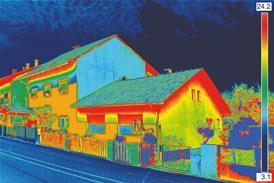The Court of Appeal has confirmed the two-step test for liability for negligent valuation, in a ruling on Bratt vs Jones
A valuation is a key component of nearly every property transaction whether it be a residential purchase, a multimillion-pound development or a refinancing agreement. When things go wrong, someone suffering a loss may look to recover some of that loss from the valuer they instructed. The recent Court of Appeal decision in Bratt vs Jones (2025) has provided welcome certainty on the test that should be applied to establish liability.
Standard of care

As with other professionals, a valuer must act with reasonable skill and care. However, it is recognised that valuation is not a precise science. Valuers may well reach different results without breaching their duties. Accordingly, a concept has developed of a permissible bracket or margin of error. For a standard residential property, the margin may be as low as plus or minus 5%, but if there are exceptional features or if there is a lack of comparable evidence, the margin of error could rise to plus or minus 15%, or even higher in an appropriate case.
A valuer will not be negligent simply because a judge comes to a different view about the true overall valuation figure
Background to the case
The case centred around a property in Oxfordshire owned by Mr Bratt, which had planning consent for 82 houses. A developer exercised an option to purchase the site at roughly 90% of its market value. The parties could not agree a price so a valuer, Mr Jones, was instructed to determine the market value by way of an independent expert determination. Mr Jones valued the site at £4.075m. The property was sold to the developer at a price based on this valuation.
Mr Bratt believed the site was worth around £8m and issued proceedings against Mr Jones, alleging that he had negligently undervalued the property.
The trial judge’s decision
The judge found that two principles of law applied:
• A finding of negligence can only be made if the valuer failed to reach the standards of a reasonably competent professional in that field.
• It is a precondition of liability that the valuation falls outside an acceptable bracket.
>>Also read: Will the gateway 2 building safety delays lead to more disputes?
>>Also read: Why are we seeing a surge in latent defects claims?
The trial judge concluded that the most likely market value of the site was £4,746,860, which placed the valuation within an acceptable margin, of up to 15%. As such, there was no need to go on to assess Mr Jones’s practices as compared with a respectable body of his peers, and the claim was dismissed.
Appeal to the Court of Appeal
Mr Bratt appealed to the Court of Appeal, challenging both the legal test that needed to be met to establish liability and the appropriate margin or bracket, which he argued was no more than 10%. Mr Bratt argued that, if the challenged valuation was outside the bracket, there was no need for a claimant to go on to prove that the valuer had failed to take adequate professional skill, care and diligence in reaching their valuation. Instead, it was for the valuer to prove they had not been negligent.
The evidential burden on a claimant is more than just showing that the valuation fell outside the acceptable bracket. While this pre-condition must be met, it is insufficient to establish liability
The Court of Appeal agreed with the approach taken by the trial judge, stating that “whilst a valuation outside the acceptable bracket is an indication that something may have gone wrong, a claim in negligence or breach of contract against a valuer cannot succeed unless the court is satisfied that the valuer has failed to exercise due and proper professional skill, care and diligence”.
The court therefore made it clear that the evidential burden on a claimant is more than just showing that the valuation fell outside the acceptable bracket. While this pre-condition must be met, it is insufficient to establish liability and the claimant must be able to show that the valuer acted otherwise than in accordance with practices which are regarded as acceptable by a respectable body of opinion in his profession.
The Court of Appeal found that the judge had been entitled to reach the conclusions that he did, including in respect of the appropriate valuation bracket. The valuation fell within the permissible bracket, and the appeal failed with all grounds of appeal dismissed.
Sting in the tail?
In reaching this conclusion, the Court of Appeal was bound by earlier case law. However, the court acknowledged that the operation of a bracket could lead to a logical fallacy whereby a negligent valuer who had not taken reasonable care and skill in reaching their valuation could escape liability should their valuation happen to fall within the appropriate bracket notwithstanding the negligent steps undertaken. The court noted, however, that any assessment of the bracket as a legal concept for determining liability can only be carried out by the Supreme Court.
What is the effect of the decision?
For now, the law remains relatively straightforward: there is a pre-condition to liability in valuers’ cases that the overall valuation must be outside of a reasonably competent range and, should the valuation fall within that bracket, the valuer will not be held liable.
Valuers can rest easy in the knowledge that they will only be found to have acted negligently where the court has found that something specific they did in their approach to the valuation was outside the bounds of reasonable professional competence. A valuer will not be negligent simply because a judge comes to a different view about the true overall valuation figure. And, for now at least, there remains the additional protection for valuers that even if a methodological mistake has been made which has distorted the overall valuation number provided, they will not be found liable for damages unless the overall valuation number falls outside of a reasonably competent range.
Polly McBride is a legal director at DAC Beachcroft, which acted for Mr Jones in the case discussed in this article























No comments yet